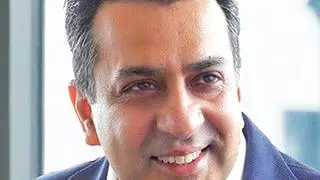Mukesh Ambani’s plans to build home-grown 5G network solution is based on an open source telecom platform called Open RAN. This network platform, similar to how open source software became a game changer in the 1990s, attempts to build telecom radio and base stations using non-proprietary technology. It will help bring down costs drastically compared to buying proprietary gear from the likes of Nokia and Ericsson.
About 70 per cent of the cost to build telecom networks comes from buying Radio Access Network (RAN) equipment, including base stations, radio antennae, receivers. Until now, this was based on proprietary software and hardware supplied as an end-to-end solution by the likes of Nokia, Ericsson, and Huawei. Open RAN (O-Ran) attempts to make core network equipment vendor-neutral with disaggregation of hardware and software functions built on general purpose processors. This avoids vendor lock-in and minimises payment of royalty towards Standard Essential Patents.
According to industry sources, Jio has been quietly working on the open source platform for at least two years. “Jio has had multiple teams on this project for two years at least. Its acquisition of Bengaluru-based Radisys in 2018 was part of this plan,” said an industry source.
With an open-source platform, Jio need not depend on a handful of vendors and can roll out 5G network at a fraction of the cost.
But there are concerns over integrating open source network with all the devices and legacy proprietary networks.

‘Can take 3 years’
CS Rao, former President and CEO of Lucent India, and Chairman, Quadgen Wireless, said, “It will take at least 3 years for open RAN-based network solutions to become a reality. Of course, Jio has the financial power and right global partnerships to invest in developing a ‘Made-in-India’ RAN product, but there are multiple issues that need to be addressed. For example, the RAN Network Element (NE) will have to be tested for 4G and 5G air interface 3GPP standards compatibility with multiple user equipment devices for seamless user experience of enhanced mobile broadband and for IoT devices .”
4G integration, ‘a challenge’
Sanchit Vir Gogia, Founder & CEO, Greyhound Research, said, “ Integration with the existing 4G network will be a big challenge for any operator. You cannot run 5G in isolation even if you want to use it for IoT or machine-to-machine communication. Because at the end of the day, you would want to connect your car to the owner’s phone or a factory machinery to the factory manager. All this needs integration and testing. So I expect 3-5 years before we can have a fully workable open RAN based 5G network. It has potential in the future but we are not there yet to make it viable.” However, given Jio has support from global partners, including Qualcomm, it may be able to overcome these challenges.
Radio frequency issue
“A substantial part of 5G network is going to be software, so this can be done in India by Jio. The hardware part is what could be challenging but even this can be done using O-RAN. One of the issues could be the lack of clarity on which radio frequency India will operate 5G. We are thinking about 3.4 GHz now, but what if we see higher frequencies being opened up later.
“So Jio will have to ensure that they build antennas and radio access network that are compatible with any new radio frequencies bands that emerge. Since O-RAN uses modular technologies, it can be integrated with the existing backhaul and 4G access network infrastructure,” said V Sridhar, Professor, International Institute of Information Technology.
‘It’s doable’
TV Ramachandran, President, Broadband India Forum said, “I believe that Jio can make this a reality. There is lot of work being done in this space already. Many operators in Europe and the US are also looking at this open platform. I know of start-ups in India that are building 5G solutions using open RAN systems. A large player such as Jio, betting on Open RAN, can speed up the development work. But at the same time, traditional vendors such as Nokia and Ericsson will continue to be important and relevant as they have invested billions into R&D.”








Comments
Comments have to be in English, and in full sentences. They cannot be abusive or personal. Please abide by our community guidelines for posting your comments.
We have migrated to a new commenting platform. If you are already a registered user of TheHindu Businessline and logged in, you may continue to engage with our articles. If you do not have an account please register and login to post comments. Users can access their older comments by logging into their accounts on Vuukle.